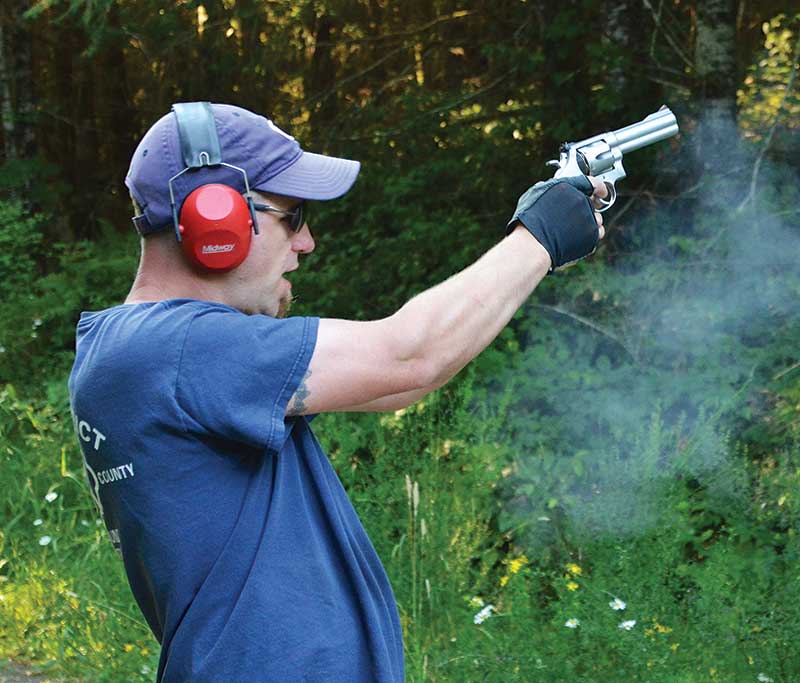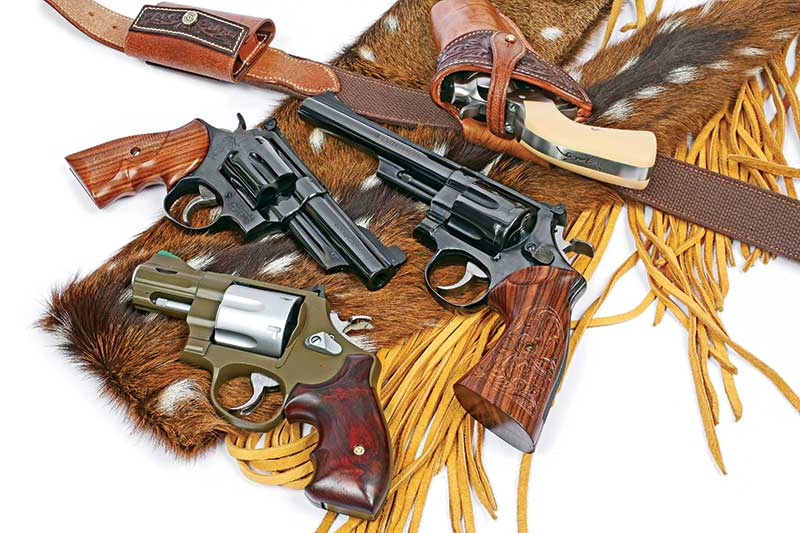Revolvers And Grizzly Bears
When Jeff Newville faced his moment of truth with the grizzly, he barely had time to fire his revolver. There was no time for the careful placement of the front sight, as the bear was nearly upon him. As fortune would have it, Jeff’s first shot was true, and the bear went down immediately. Jeff didn’t stop firing his revolver until it was empty, as the bear was far too close. On that day, a properly loaded revolver saved his life.
There are many things to consider when carrying for defense in the deep woods, and quick access to the gun is certainly one of them. Reasonable caliber selection, proper ammunition choice, and skill with the revolver are also imperatives. Simply going afield with a decent firearm is no real insurance against any bear.
When predators attack, they close with incredible speed and often are not seen until nearly upon their target. Given the obvious need for an immediate anchor, the only reliable shot is one destroying the brain or spinal cord. A shot through the heart will certainly kill the bear, but probably not in time to save the shooter. A charging bear always presents his head, so busting the skull and destroying the brain is the best shot.
There are numerous revolver calibers, including the .41 Magnum, .44 Magnum, .45 Colt and .454 Casull, capable of busting through the skulls of the largest grizzlies. However, the demands of shooting an attacking bear are completely different from those found when hunting lesser game, and require a different ammunition solution
High Velocity?
Although high velocity buys us more kinetic energy, in the field the only significant advantage of high velocity with hard, non-expanding bullets from the revolver, is trajectory. In fact, the high velocities common to most commercial handgun loads greatly increase the chance of a bullet failure when impacting heavy bone at close range.
The stress on the bullet at impact is the product of the speed of impact and the toughness of the target. Grizzlies are very tough, and when attacking are invariably close. This strongly argues for a hard and heavy bullet at modest velocity. Bullets in the weight range of 280 grs. for the .41 Magnum, and 300 grs. for the .44 Magnum and .45 Colt/.454 Casull provide the necessary weight to reliably bust heavy bone. Since all such shooting will occur at very close range, a velocity of about 1,000-fps is optimum, as the reduced velocity decreases the stress on the bullet, effectively strengthening it. The extra weight increases the sectional density, or the weight driving the diameter, insuring deep penetration. There’s also the added advantage of less recoil and faster recovery-time. This is an ideal ammunition solution for stopping an enraged bear.
Recent years have seen a number of .44 Magnum revolvers introduced with very short barrels and significant non-steel construction. Although they are noticeably easier to carry due to their lighter weight, they present a number of problems directly related to their smaller size and weight. The first thing most shooters will notice is a significant increase in recoil and recovery-time. As gun weight goes down, recoil goes up.
The second problem — a significant velocity loss — may go unnoticed by those without a chronograph. This problem can only be addressed by firing a more powerful load, which of course will further increase the recoil of the lighter gun, slowing recovery-time even more. The importance of a quick recovery from recoil in a close-quarters skirmish with a bear cannot be over-emphasized. If recoil is severe enough to noticeably slow the shooter’s follow-up shot, it could be a very bad day. In the surprise and adrenaline rush accompanying such events, always assume quick follow-up shots will be required to stop the threat.
No Compromises
Although smaller and lighter is always easier to carry, ease of carry shouldn’t be allowed to compromise the performance of the gun/shooter. Clearly, long barreled revolvers aren’t required, but 4″ to 6″ barrels seem to provide the best choice, as they are reasonably easy to carry and draw, and provide less recoil and higher velocity than short-barreled, lightweight guns.
Just as controllability is more important than ease of carry, ammunition selection is more important than caliber. So be sure to enter the woods with a revolver built and loaded to perform in an emergency. This is not the occasion for expanding bullets of any kind, as they have a poor chance of surviving impact with heavy bone, and are far less likely to reach the brain than a proper cast bullet. And remember, a hard, heavy bullet at moderate velocity fired from a revolver with a medium-length barrel is the best handgun/ammo combination for defense in the deep woods.






